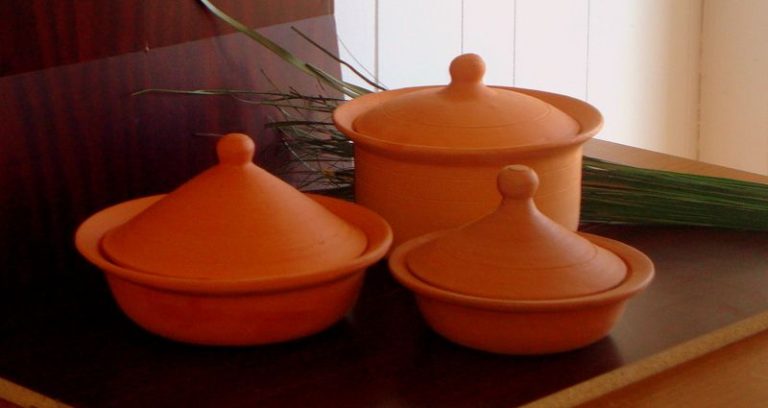What Chemicals Are In Blue Clay?
Blue clay, also known as blue green clay, is a type of bentonite clay that gets its distinctive blue hue from the presence of minerals like magnesium and iron. Unlike other clays that may have a red, yellow, or grey tone, the blue/green color of this clay comes from its rich mineral content.
Blue clay is known for its high absorptive properties and ability to draw out impurities from the skin. It also contains trace minerals that provide antioxidant and anti-inflammatory benefits. This makes blue clay a popular ingredient in many skincare and cosmetic products.
In addition to skin applications, blue clay also has several other uses. It can be taken internally as a health supplement or used for making clay baths. The absorptive properties also lend themselves well for industrial applications like oil and grease removal. Blue clay’s versatility across cosmetic, medicinal and industrial uses make it a unique and valuable type of clay.
Chemical Composition
Blue clay gets its distinctive blue-green color from its chemical composition. The main chemical components that give blue clay its unique properties are:
Silica
Silica makes up around 45-55% of blue clay. Silica is a mineral that occurs naturally in sandstone, clay, and granite. It is an abundant mineral on the earth’s surface. The silica in blue clay is believed to absorb toxins, help rebuild connective tissues, and improve skin cell regeneration.
Alumina
Alumina makes up around 15-25% of the composition of blue clay. Alumina is aluminum oxide that occurs naturally as the mineral corundum. The small particle size and surface charge properties of alumina particles in blue clay allow it to absorb toxins effectively.
Iron Oxides
Blue clay contains up to 10% iron oxides, which gives it the blue-green pigments. The most common iron oxides are hematite and magnetite. Iron oxides act as antioxidants and give blue clay its rich color.
Beneficial Minerals
Blue clay contains an impressive array of trace minerals that provide health benefits when absorbed through the skin or ingested. Some of the key minerals found in blue clay include:
- Calcium – This mineral strengthens bones and teeth while regulating muscle function. Calcium also assists with blood clotting.
- Magnesium – Magnesium relaxes muscles and nerves, promoting healthy sleep and mood. It also aids in protein synthesis and energy production.
- Potassium – Potassium regulates fluid balance, nerve signals, and blood pressure. It also reduces muscle cramps and fatigue.
- Iron – Iron transports oxygen, boosts immunity, and supports cognitive function. Many people are deficient in this essential mineral.
- Silica – Silica improves skin elasticity and heart health. It also helps form collagen, hair, nails, and bones.
By replenishing vital minerals, blue clay provides key nutrients often lacking in the modern diet. Its rich mineral content makes it highly prized for therapeutic and cosmetic applications.
Montmorillonite
Montmorillonite is one of the main minerals found in blue clay. It belongs to the smectite group of clays and has a layered sheet structure. The individual layers in montmorillonite have a high cation exchange capacity, meaning they can absorb and adsorb a wide variety of molecules.
The main chemical composition of montmorillonite includes silicon, aluminum, magnesium, sodium, calcium, and hydrogen. When water is absorbed between the layered sheets, montmorillonite expands and develops plasticity. This makes it useful as a thickening and suspension agent.
Montmorillonite has small particles sizes, resulting in high surface area. This gives blue clay excellent absorption properties when applied topically. The negative charge of montmorillonite also allows it to bind to positively charged toxins, molecules, and heavy metals. This helps draw out impurities when used medicinally or cosmetically.
Overall, the unique properties of the montmorillonite mineral found in blue clay contribute to many of its beneficial uses, ranging from skincare, detoxification, medicinal therapies, and industrial applications.
Absorption Properties
One of the most notable characteristics of blue clay is its ability to absorb toxins, impurities, and excess oils. This is due to blue clay’s unique molecular structure.
The main mineral in blue clay, montmorillonite, contains tiny platelets that carry negative electromagnetic charges. When mixed with water, these plates separate and the clay develops a strong absorbent capacity. The negative charge of the clay attracts positively charged toxins, impurities, and excess sebum/oils on the skin and hair.
Blue clay has been shown to be effective at drawing out toxins, heavy metals, impurities, and excess oils from the skin. Some of the toxins blue clay can absorb include:
- Environmental toxins
- Pollution
- Bacteria
- Excess sebum
This makes blue clay an excellent ingredient for skin and hair masks, cleansers, and other topical products aiming to deep clean and detoxify.
Cosmetic Uses
Blue clay is commonly used in skin care and cosmetics for its absorption and cleansing properties. When applied topically, blue clay can provide many benefits:
Skin Detoxification
The minerals in blue clay, like magnesium, calcium, silica, and potassium, possess cleansing and detoxifying effects. A blue clay face mask can draw out impurities from the skin and deep clean clogged pores.
Exfoliation
The clay particles act as a gentle physical exfoliant to remove dead skin cells, oils, and debris from the skin’s surface. This leaves skin smooth and polished.
Skin Calming
The cool, soothing nature of blue clay helps calm irritation, redness, itchiness, and inflammation when used on rashes, blemishes, sunburns, or bug bites.
Moisturizing
Although clay deeply cleanses, it also attracts and seals in moisture. A weekly nourishing blue clay mask can hydrate and soften the complexion.
Anti-Aging
Minerals like silica in blue clay promote collagen production, while the antioxidants fight free radicals and environmental damage for younger, firmer looking skin.
Medicinal Uses
One of the most popular medicinal uses of blue clay is ingesting it for its purported digestive and detoxification benefits. Some proponents claim that the montmorillonite and other minerals in blue clay can help absorb toxins, heavy metals, and other impurities from the digestive tract. The clay is said to act as a mild laxative, helping to eliminate waste and promote regularity. Some natural health practitioners recommend taking blue clay internally to assist with symptoms of leaky gut syndrome, IBS, bloating, constipation, diarrhea, and other gastrointestinal issues.
The clay can be mixed into water or juice and drank once per day. Typical dosages range from 1-2 teaspoons daily, though it’s best to start with small amounts and increase slowly to assess tolerance. Those with sensitivity or constipation may want to begin with as little as 1/4 teaspoon. It’s also important to drink plenty of water when taking blue clay internally to help flush out the digestive tract.
While preliminary research shows promise for using clays like bentonite for detoxification, there is limited evidence specifically for the benefits of ingesting blue clay. As with any supplement, it’s recommended to consult your healthcare provider before using blue clay medicinally, especially if pregnant, breastfeeding, or taking medications.
Other Uses
In addition to cosmetic and medicinal uses, blue clay also has a variety of other practical applications around the home. Its absorbent properties make it a versatile cleaning and odor removal agent.
One of the most common uses is as a cat litter. The montmorillonite in blue clay soaks up urine and helps control odor. It is a natural and non-toxic alternative to traditional clay litters. Blue clay cat litter is scoopable and biodegradable. It tends to be less dusty than other clay options.
Around the house, blue clay can be used to deodorize refrigerators, trash cans, and any other areas that tend to collect odors. It absorbs the smell rather than simply masking it. The used clay can be discarded or reactivated by baking in the oven.
As a cleaning agent, blue clay works well on carpets, upholstery, and surfaces. It can be sprinkled on stains or used in solution to lift dirt. The clay draws out grease, oils, and deeply embedded grime. It is gentle enough for delicate fabrics.
Gardeners sometimes use blue clay as a natural fertilizer. It provides nutrients and helps retain moisture in the soil. The clay can also improve drainage and aerate dense soil when tilled in.
With its versatile absorbing and cleaning abilities, blue clay has many household and everyday uses beyond skin care treatments and other health remedies. It is an effective, natural tool for odor and stain removal around the home.
Buying Blue Clay
When looking to buy blue clay, it’s important to find a pure, high-quality product. There are a few things to look out for:
– Source – Try to find blue clay that is sourced from pristine locations to ensure no contamination. Some of the best deposits are found in regions like Wyoming, Utah, and France.
– Processing – Look for minimally processed clay that preserves the natural minerals. Avoid clay that has been chemically treated or contains additives.
– Color – High quality blue clay has a beautiful deep blue color when hydrated. Avoid grey, dull or sandy looking clays.
– Purity – Seek out cosmetic grade clays that are purified and free of heavy metals, pollutants, and other contaminants.
– Texture – Good blue clay should have an ultra fine, velvety texture. It should not feel gritty or sandy.
– Scent – Pure blue clay has an earthy, subtle scent. Avoid clays with chemical or perfumed smells.
– Certifications – Some reputable brands test their clay and provide lab analysis reports to ensure purity.
When sourcing blue clay, look for companies that ethically harvest from pristine locations and aim to provide the highest quality product possible. This will help ensure you get all the benefits of pure blue clay.
Conclusion
In summary, blue clay contains a unique chemical composition that provides many benefits. The main component is montmorillonite, a mineral that gives blue clay its distinctive properties. The absorbent nature allows blue clay to draw out impurities from the skin, making it a popular ingredient in skincare and cosmetics. It also has healing properties when ingested, due to the minerals it contains. Other uses range from industrial applications to art and pottery. With its myriad of uses and health benefits, it’s clear why blue clay has been prized since ancient times, and continues to be popular today.
The versatile nature and mineral content of blue clay make it a beneficial addition to skincare routines, medicinal remedies, and household uses. Whether you are hoping to improve your complexion, heal digestive issues, or even create art, blue clay can likely provide an effective solution. Seek out pure, high-quality blue clay and discover how this colorful clay can enhance your health, home and beauty regime.



